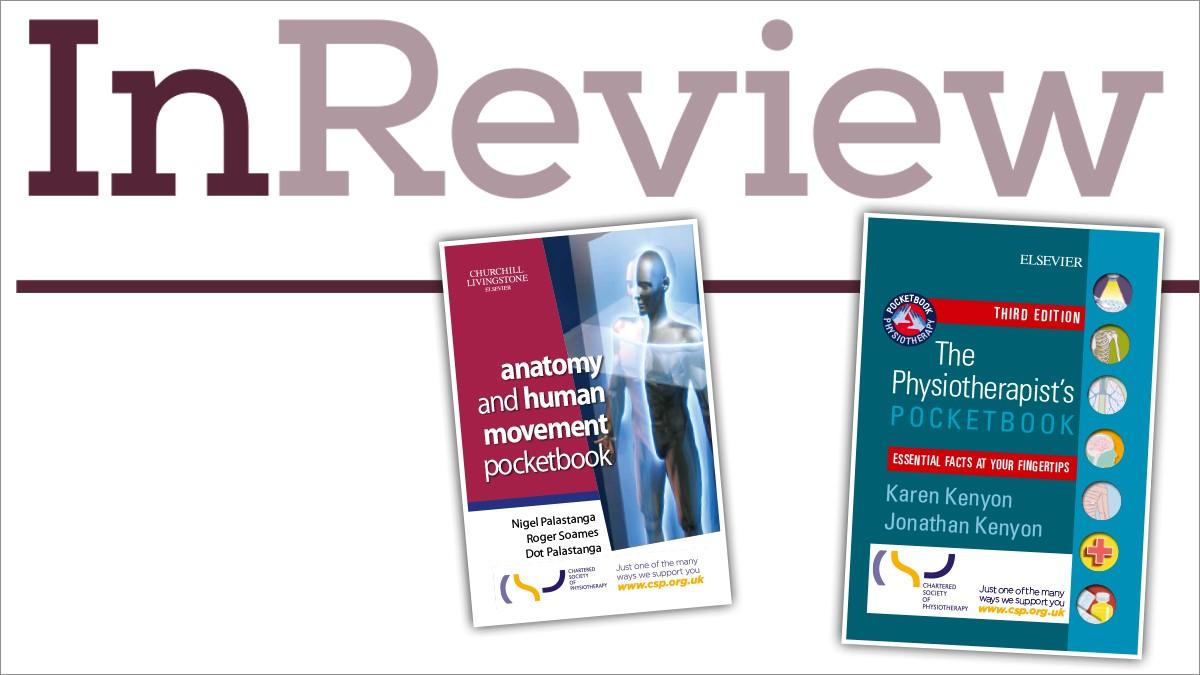Our featured book, 'The Physiotherapist’s Pocketbook: Essential Facts at Your Fingertips*' 3rd edition. Essential facts at your fingertips. Read on ...

The Physiotherapist’s Pocketbook: Essential Facts at Your Fingertips* Karen Kenyon and Jonathan Kenyon Elsevier; Third edition ISBN 978-0-7020-7852-1
The authors of this indispensable pocketbook originally set out 18 years ago to compile all the reference notes that they had made as newly qualified physiotherapists for their clinical placements and rotations to create a compendium of key information covering the core areas of physiotherapy.
As a result, what we get is a quick reference guide that can be kept in a tunic pocket while on the wards. It has long been a lauded as a must have for any student and is particularly aimed at those on core clinical placements – musculoskeletal, neurology, respiratory. A quick look at its Amazon rankings places it at number four for Physiotherapy, seven for Occupational Therapy, and nine in Counselling and Therapy, proving the authors have got their marketing spot on.
This third edition – published just in time for the new academic year – contains additional information on special tests and assessment tools, an extended A-Z list of common pathologies, an expanded pharmacology section, more common abbreviations and illustrations, laid out in six easy reference sections: Neuromusculoskeletal anatomy, Neuromusculoskeletal assessment, Neurology; Respiratory, Pathology and Pharmacology.
It will be helpful for students and clinicians alike, when they need a quick reminder of key facts, and should be used in parallel with other literature and research. Each section is finished off with references and further reading, which have been updated to include recent work.
This is a reader-friendly book, designed to be quickly rifled through to provide answers and information. Stand out features include illustrations, diagrams and tables, which provide an instantly accessible reference source. On clinical placement, it’s an invaluable aid to
keep in the pocket and should reduce anxiety over notes left behind at home. The illustrations are clear and concise, while the grey, white and green colour palette leaves plenty of space for notes so you can personalise your copy.
- Ciara Younge is the CSPs students’ officer, practice and development
Anatomy and Human Movement Pocketbook* Nigel Palastanga, Roger Soames, Dot Palastanga.ISBN 978-0-443-06912-3
This is a useful adjunct to the popular full sized Anatomy and Human Movement textbook by Nigel Palastanga and Roger Soames, now in its seventh edition. The contents page is clearly laid out and I found the colour coding for different sections helpful as I thumbed through.
The pocket version is aimed at physiotherapy, occupational therapy and sports students. It will be helpful for both students and clinicians for a quick reminder of key facts. It is intended as a study aid and does not in itself provide the level of detailed anatomy required by physiotherapists, nor does it claim to do so.
The book is structured under five headings; Introduction, Upper limb, Lower limb, Trunk and Neck, and Head and Brain. Unlike its full-sized textbook namesake, the sections on the upper and lower limb are set out to describe regions such as shoulder, elbow etc. This is helpful in bringing together all the information related to bones, joints, ligaments, muscles and movements. The summary of movements and the muscles used will be helpful for those starting anatomical and movement studies.
The book contains many clear illustrations. Throughout the book there are examples of the application of anatomical knowledge to clinical conditions, along with notes on how to palpate structures – all of which help to underline the importance and relevance of theoretical knowledge to clinical practice.
- Shan Aguilar-Stone, professional advisor with the CSP, and former physiotherapy programme lead
Number of subscribers: 1




































